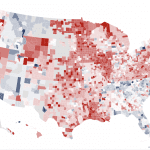Most firms don’t fail for lack of leads. They fail because the business runs on slide decks, heroic managers, and an ungoverned tech stack. If you’re carrying top-line growth with growing chaos underneath, you don’t have an efficiency problem—you lack a brokerage operating system.
A brokerage operating system defines how decisions are made, how work flows, and how value is created at scale. It connects strategy to weekly execution, surfaces truth through data, and produces consistent outcomes independent of any single individual. Elite operators treat it as infrastructure, not software.
What a Brokerage Operating System Is—and Why It Matters
An operating system is not a CRM or a set of SOPs. It’s the integrated design of your operating model—governance, processes, people, data, and tools—built to produce repeatable margins. As The operating model: Back to basics notes, durable performance comes from clarity on structure, accountabilities, and ways of working. In a market where capital is selective and cycles compress, firms with a tighter system compound faster and absorb shocks better.
Bottom line: If strategy is what you want, the brokerage operating system is how you get it—consistently.
The 7 Components You Need to Scale
1) Strategy Cascade and Accountabilities
Translate annual priorities into quarterly objectives and weekly commitments. Each objective has a single owner, leading indicators, and a finish line definition. Publish a RACI for cross-functional initiatives (recruiting, expansion, ancillary). Eliminate orphaned goals and dual ownership. Expectation: every leader can state what must be true by quarter’s end and who is on the hook.
Action: Install a quarterly OKR cycle with monthly checkpoints and weekly commitments documented in one system of record. Close the loop every Friday—commit, measure, adjust.
2) Unit Economics and Financial Discipline
Run the business on contribution margin per pillar (sales, recruiting, ancillary), cost to acquire (agent + customer), productivity per FTE, and cash conversion. Disaggregate by cohort: top quartile agents, mid-tier, new-to-firm. Kill averages; manage the mix. Build rules for splits, caps, referral fees, and agent services pricing that protect margin as you scale.
Action: Stand up a rolling 13-week cash forecast and a monthly margin review by line of business. Do not greenlight headcount or marketing without a clear payback window.
3) Talent Pipeline and Enablement
Recruitment is a pipeline business: sourced, engaged, interviewed, won, ramped. Treat agents, staff, and leaders as distinct pipelines with different value props and ramp curves. Post-hire, enable with a 90-day ramp plan tied to activity, appointments, and pendings. Remove guesswork; build a playbook for day 1–90 and measure conversion through each stage.
Action: Require a weekly recruiting pipeline review with conversion rates by stage and source. Fire the wrong-fit early; double down on coachable talent.
4) Demand Generation and Deal Flow Architecture
Separate creation from conversion. Creation = brand and outbound systems that produce opportunities for core sales, recruiting, and partnerships. Conversion = disciplined follow-up, offers, and SLAs. Establish SLAs across channels (inbound, agent-to-agent, private client, institutional) with defined speed-to-lead, touches, and handoffs. Own the follow-up math; scale what converts, not what generates noise.
Action: Instrument every campaign with cost, speed, conversion, and cycle time. Prune channels quarterly; reallocate to the top 20% performers.
5) Process Architecture and Playbooks
Codify the five to seven critical processes that drive margin: listing intake, contract-to-close, recruiting workflow, onboarding/ramp, price improvement loop, annual client review, and expansion market launch. Each process has a clear trigger, owner, SLA, and quality definition. Document the 80% path; allow for 20% expert judgment.
Action: Build one-page SOPs with embedded checklists and assets. Train to the playbook, not the personality.
6) Data, Dashboards, and Truth Standards
Decide what is “source of truth” for people, deals, finance, and activity. Push data to role-based dashboards that show trailing results and leading indicators. Leaders manage lead time and throughput; agents see activities-to-appointments-to-closes; finance sees margin by source. Adopt a weekly rhythm: review, diagnose, decide. According to Emerging Trends in Real Estate 2025, operators winning share in tighter markets are those turning data into operational speed. Make that your standard.
Action: Publish a KPI glossary. No meeting debates definitions. If it’s not in the glossary and on the dashboard, it’s an unverified opinion.
7) Governance, Cadence, and Risk Controls
Set the drumbeat: weekly leadership meeting (priorities, pipeline, blockers), monthly P&L and margin review, quarterly strategy reset. Create a decision log—what was decided, by whom, and why. Build risk controls for trust accounting, compliance, data privacy, and vendor access. Good governance protects margin and reputation.
Action: Assign an operating owner (not a committee). Their job: maintain the system, not run every function.
Instrumentation: Make Performance Visible and Actionable
Dashboards only matter if they change behavior. Design for decisions, not decoration. For each role, identify the three decisions they make weekly and build the view that informs those decisions. Keep score on lead indicators: speed-to-lead, appointments set, recruiting offers extended, days-to-onboard, contract cycle time, price-change adoption, and net productivity per agent. Tie compensation for leaders to these controllable drivers alongside P&L outcomes. When the score is public, coaching becomes specific and meetings get shorter.
Set thresholds that trigger action. If speed-to-lead slips below standard, reroute to a backup queue. If recruiting offer acceptance falls, change comp design or value story within 14 days. Treat each trigger like a standing order, not a suggestion.
Technology Architecture for Your Brokerage Operating System
Technology supports the system; it is not the system. Define the architecture by capability: identity and access, CRM and pipeline, marketing automation, transaction management, finance, analytics, and knowledge base. Choose a system of record for each domain and integrate via API, not manual exports. Limit shadow IT; every tool must name its owner, purpose, and KPI.
Minimum viable stack: one CRM with role-based pipelines, one marketing automation platform, one transaction/commission engine, one BI layer connected to your data sources, and a knowledge repository for playbooks. Score tools by adoption, not features. If it’s not used by 80% of intended users, it doesn’t count.
Action: Run a quarterly stack audit—usage, overlap, cost, and outcome. Sunset tools that don’t move a KPI. Protect your brokerage operating system from vendor sprawl.
90-Day Implementation Roadmap
Day 0–30: Define. Pick two company-level objectives and five to seven metrics. Publish the KPI glossary. Appoint the operating owner. Map the seven components and assign owners for each.
Day 31–60: Build. Document the 80% path for your critical processes. Stand up role-based dashboards. Establish weekly and monthly operating rhythms with agendas and decision logs.
Day 61–90: Prove. Run the cadence without exception. Review leading indicators weekly, reallocate spend to the top-performing channels, and adjust enablement to close performance gaps. Archive decisions and outcomes. Educate the organization: this is how we operate now.
If you need an external mechanism to accelerate design and adoption, engage a private advisory with operating depth, not generic coaching. RE Luxe Leaders® and the RELL™ methodology are built to install systems that compound—strategy to ground truth, dashboards to decisions, and governance that survives leadership turnover.
Conclusion: Build Infrastructure, Not Heroics
Markets will tighten, talent will rotate, and channels will change. A brokerage operating system protects margin through those cycles by institutionalizing how your firm works. Design it once, tune it continuously, and make it the standard everyone operates against. That’s how you convert leadership intent into durable, scalable performance.





